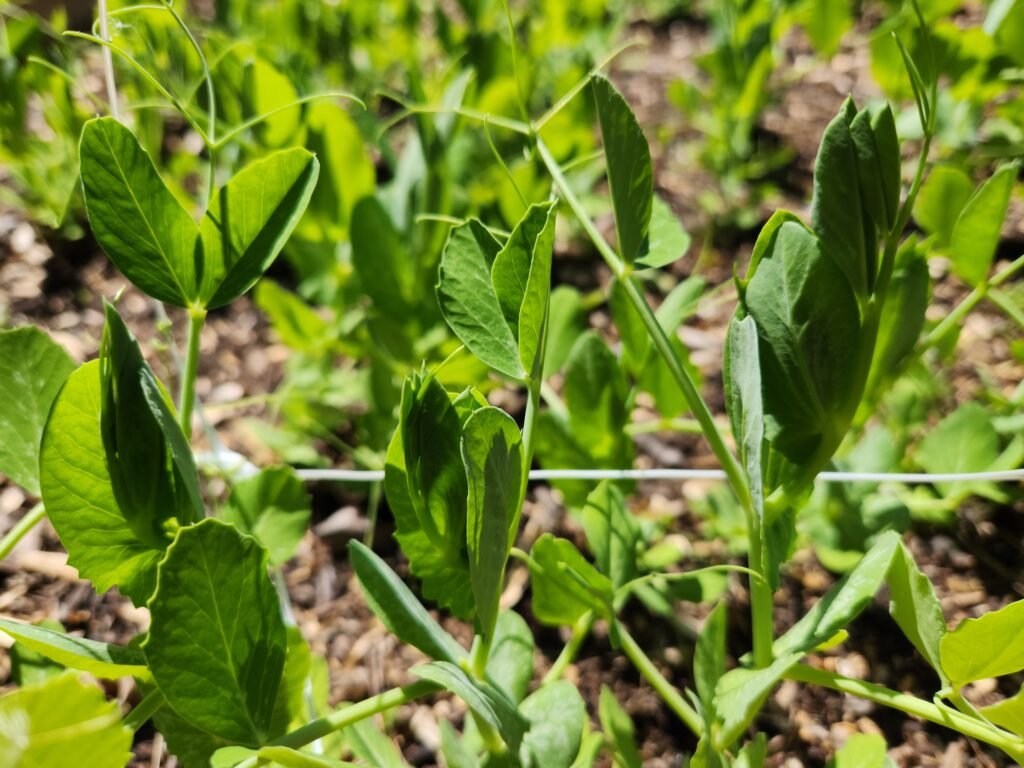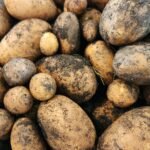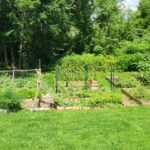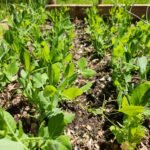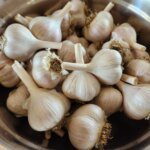Growing peas is a gratifying endeavor that rewards gardeners with sweet, tender pods and enriches the soil through nitrogen fixation. Whether you’re a novice or an experienced gardener, cultivating pea plants can be both enjoyable and straightforward.
This comprehensive guide will walk you through the process of growing peas, from selecting the right varieties to harvesting your crop. Additionally, we’ll address frequently asked questions to ensure you have all the knowledge needed for a successful pea-growing experience.
1. Selecting The Right Pea Varieties
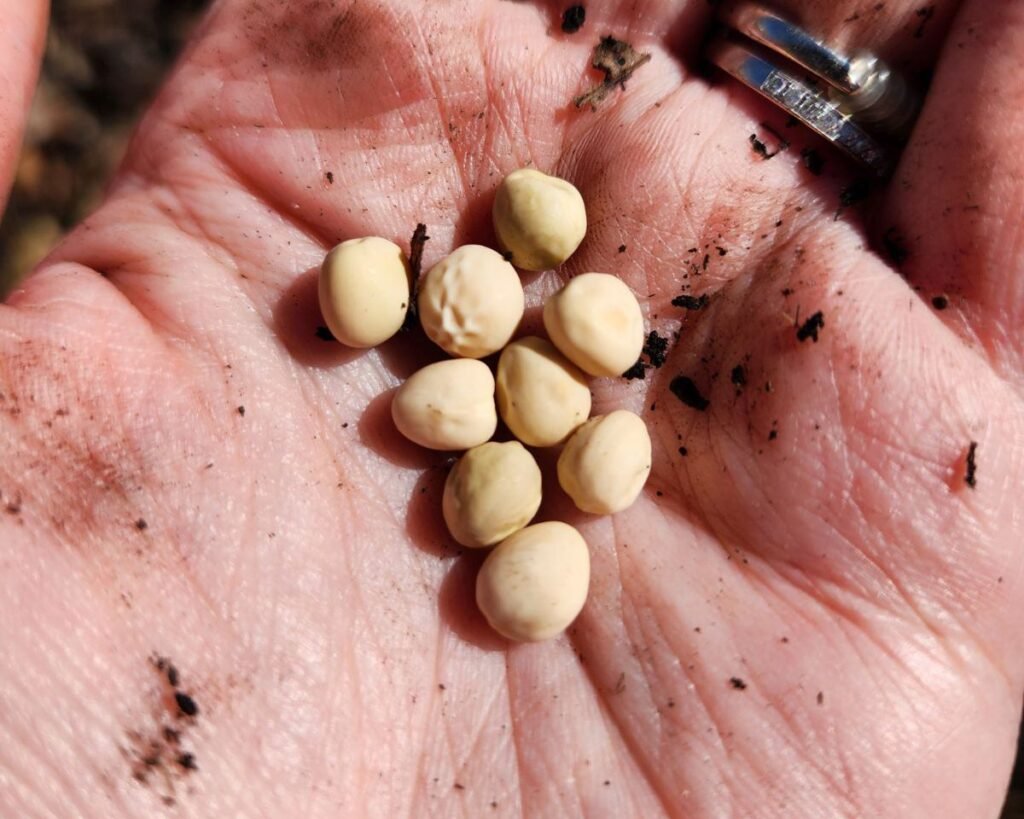
Pea varieties refer to the different types of pea plants that are available for cultivation. There are three main types of pea varieties:
- Garden Peas (Shelling Peas): These peas are harvested when the seeds inside the pods are mature. The pods are inedible and need to be shelled before consumption.
- Snap Peas (Sugar Snap Peas): Snap peas are harvested when the pods are still tender and can be eaten whole, including the peas inside.
- Snow Peas (Chinese Pea Pods): Snow peas are harvested when the pods are flat and the peas inside are very small. The entire pod is edible and commonly used in stir-fry dishes and salads.
Each variety has its own unique growth patterns and flavor profiles, making them a versatile and nutritious addition to any garden or plate.
2. Planting Peas
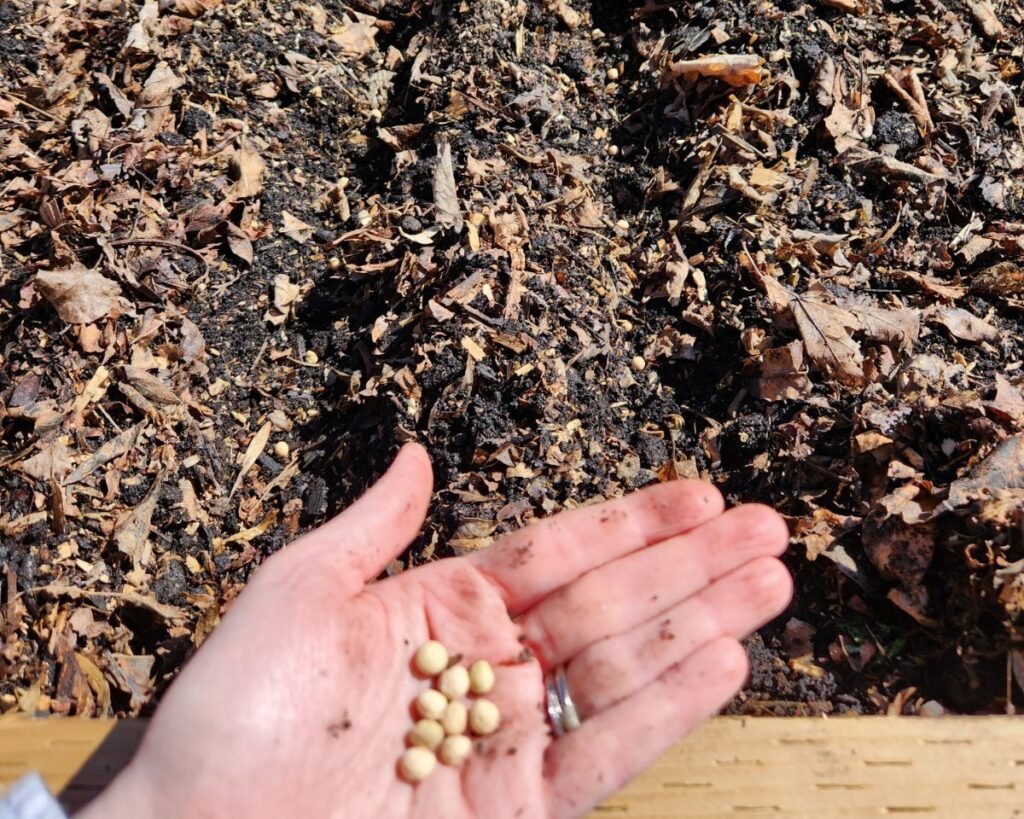
When To Plant Peas:
Peas are one of the more cold hardy plants in the garden, but they don’t do very well in high heat. Planting them early is your best bet for a good harvest. Peas can tolerate temperatures as low as -6°C or 21°F.
Here in zone 5B with a last frost date of May 7th we plant our peas the first week of April. Once temperatures consistently reach above 21°C or 70°F your pea plant will start to suffer. Planting in an area that gets afternoon shade will help prolong your growing season. Optimal growing temperature for peas is between 10-20°C (50-70°F).
How To Plant Peas:
There are 2 main ways to plant peas, direct sowing and starting indoors and transplanting. We’ve tried both methods and highly recommend direct sowing all the peas that you plant. Peas have very fragile root systems that can get damaged during transplanting and can end up stunting the development of the plant. When that happens all the benefit of starting them early disappears as the plant regrows its root system.
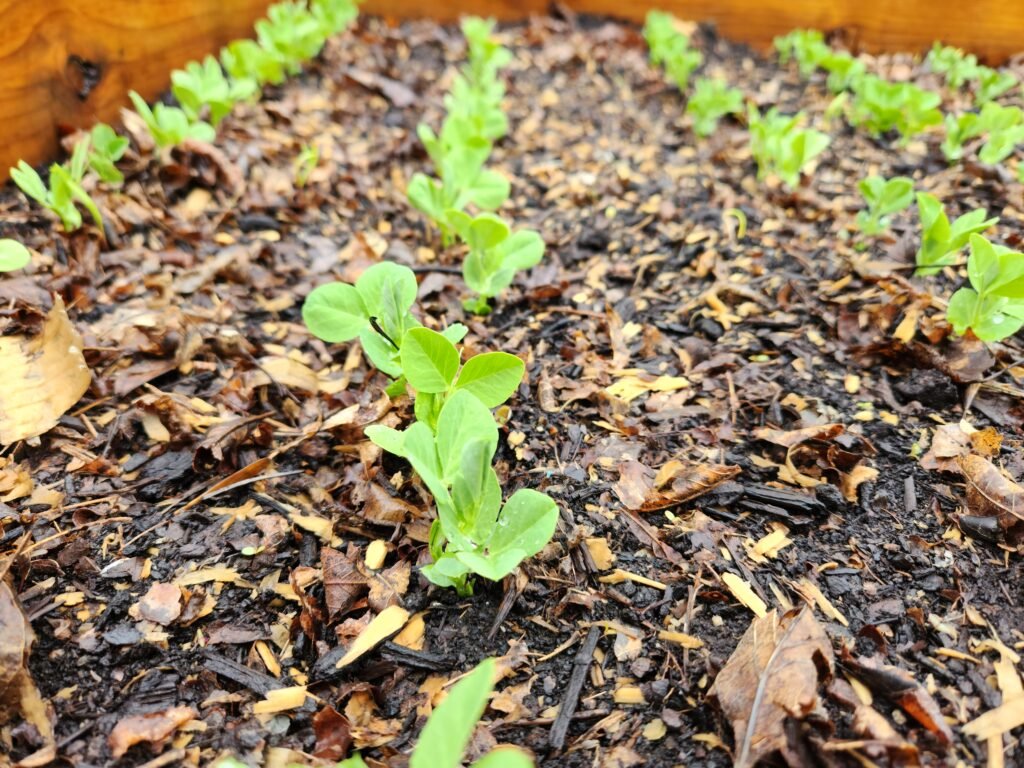
Direct sowing peas can be accomplished in two ways:
- Trench Method: Dig a trench about 1 inch deep and place the seeds every 2 inches. Peas are one plant that doesn’t mind being planted close together, and most of the growth will be straight upwards. Cover your rows of seeds, and you’re all set.
- Individual Planting: Pea seeds are large enough that you can simply push them into the ground using your finger. Mark the area that you want to plant and push a seed into the ground, spacing them every 2 inches. Once planted, the peas should emerge in 7-10 days.
3. Pea care tips
Building A Trellis:
Using a trellis is an effective way to support the plants and keep them off the ground, which can help prevent diseases and pests. Additionally, it helps to conserve garden space and makes harvesting easier. A trellis can be built with many different materials from a tomato cage to a few sticks and some string. The main thing is to keep the pea plants off the ground. However you are able to do that.
Watering:
Regular watering is also crucial for pea plant care, as they require consistent moisture throughout the growing season. Provide 1 inch of water to each plant per week. Mulching around the base of each plant will help to retain moisture and keeps the roots cool.
Fertilizing:
Fertilizing is another important aspect of care. Peas are heavy feeders and require adequate nutrients to produce healthy foliage and large, sweet peas. Applying a balanced fertilizer during planting and again mid-season will help ensure a bountiful harvest.

Pea Pests And Diseases:
Pea plants are susceptible to various pests and diseases that can affect their growth and yield. Some common pests include aphids, which can stunt plant growth and spread disease, and pea weevils, which can damage the seeds and reduce yields. Diseases such as powdery mildew and root rot can also affect pea plants, causing leaf damage and reduced yields. To prevent these issues, it is important to practice good garden hygiene, rotate crops, and use disease-resistant varieties when possible. Additionally, removing infected plant material and using organic pest control methods can help prevent the spread of pests and diseases in the garden.
4. Harvesting Peas
Harvesting each type of pea variety is slightly different, and it is important to know when to harvest them to ensure that they are at their peak flavor and quality. The way you harvest the peas is the same for every variety, it is only the timing of the harvest that you must master. To harvest peas, grasp the stem with one hand and gently pull the pod off the vine with the other, being careful not to damage the plant. Below we’ll go into when to harvest each variety.
- Garden peas: Garden peas are the most commonly grown variety and are typically harvested when the peas inside the pods are fully mature, but before the pods begin to dry out. The pods should be firm and bright green in colour.
- Snap peas: Snap peas, also known as sugar snap peas, are harvested when the pods are still tender and the peas inside are small and sweet. The pods should be plump and crisp, with a bright green colour.
- Snow peas: Snow peas, also known as Chinese pea pods, are harvested when the pods are still flat and the peas inside are very small. The pods should be crisp and bright green in colour.
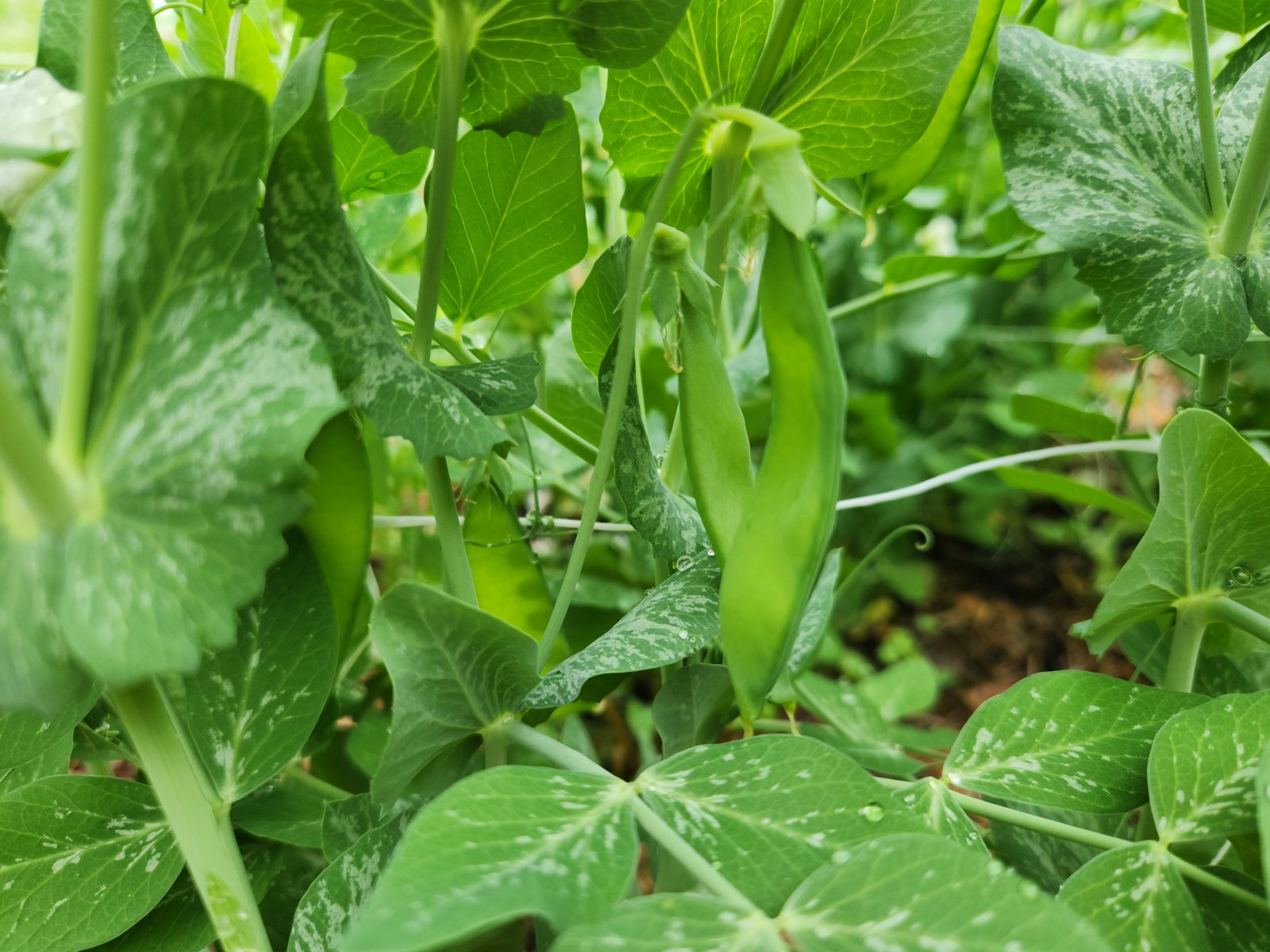
Each type of pea variety has its own unique flavor and texture, and knowing when to harvest them can help ensure that your crop is as delicious and productive as possible. Regardless of which type you’re growing, regular harvesting is crucial. The more you pick, the more your pea plants will produce. If pods are left on the vine too long, the plant will slow down production, and the pods may become tough or starchy.
Extending the Harvest Season
If you’re really loving the process of growing pea plants and want to extend your harvest as long as possible, there are a few strategies you can use:
Succession Planting
Succession planting involves planting new pea seeds every two to three weeks during the early part of the growing season. This approach helps stagger your harvest and ensures a steady supply of fresh peas rather than a single large harvest all at once.
Shade and Mulching
As temperatures rise, pea plants begin to suffer. You can help keep your pea plants productive by growing them where they receive morning sun and afternoon shade. Adding a thick layer of mulch around the base of the plants also helps keep the root zone cool and moist, reducing heat stress and extending the life of your crop.
Fall Planting
In regions with mild fall temperatures, you may be able to plant a second round of peas in late summer for a fall harvest. Just make sure your plants have enough time to mature before the first frost. Choose early-maturing varieties if you’re unsure.
Saving Pea Seeds
Growing peas also gives you a great opportunity to begin seed saving, especially if you’re growing open-pollinated or heirloom varieties. Pea plants are self-pollinating, so they typically grow true to type from saved seed.
To save seeds:
- Allow a few pods to remain on the plant until they are fully mature and dry on the vine.
- Harvest the dry pods and shell the peas.
- Store your saved seeds in a cool, dry place in an envelope or airtight jar until next season.
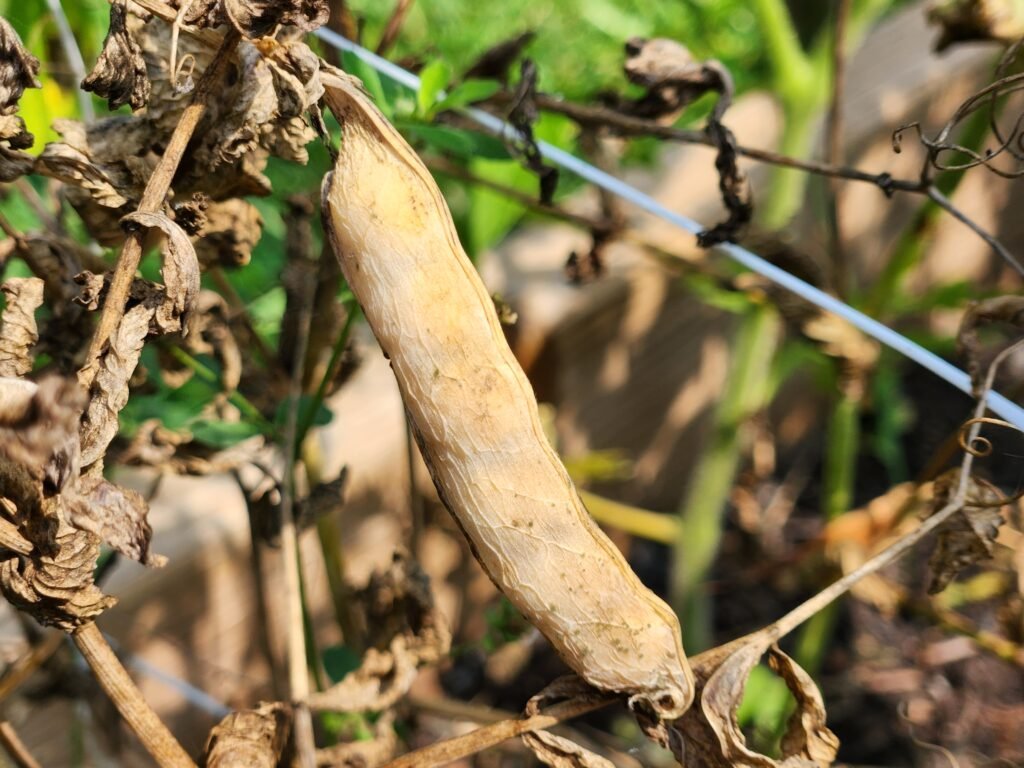
Saving your own seeds helps preserve strong, locally adapted genetics and reduces your dependence on seed suppliers.
Companion Planting for Peas
Growing peas alongside the right companion plants can improve their performance and boost your garden’s overall health.
Best Companions:
- Carrots and Radishes: Help break up soil and improve drainage for pea roots.
- Lettuce and Spinach: Make great use of space and enjoy similar growing conditions.
- Turnips and Beets: These root vegetables don’t compete for vertical space, making them great partners.
- Cucumbers and Corn: Offer support for vining peas and create a micro climate for cooler soil.
Avoid Planting Peas Near:
- Onions, Garlic, and Shallots: These alliums can inhibit pea growth.
- Potatoes: Compete for the same soil nutrients and space, potentially stunting each other.
Preserving Your Pea Harvest
Once your hard work growing pea plants pays off with a bumper crop, it’s time to preserve them for later enjoyment. Here are a few ways to make the most of your harvest:
Freezing
Freezing is the easiest and most popular way to preserve peas. Shell your garden peas, blanch them for 90 seconds in boiling water, then plunge them into ice water. Drain and pack into airtight freezer bags. Snap and snow peas can also be frozen—just blanch them for 2 minutes instead.
Pickling
Snow peas and snap peas can be pickled for a crunchy snack or side dish. Use a standard refrigerator pickle recipe and spice it to your liking. Pickled peas are delicious and store for several weeks in the fridge.
Drying
Dry your garden peas for soup peas or re-hydrating later. Allow pods to mature fully and dry on the vine. Once completely dry, shell and store them in a cool, dark place. Dried peas can last for years if properly stored.
Frequently Asked Questions
Most pea varieties take between 60 to 70 days from planting to harvest. Some early varieties can be ready in as little as 55 days, while others may take up to 80 days depending on weather and growing conditions.
Pea plants grow best in full sun to partial shade. Ideally, they should get 6 to 8 hours of sunlight per day, but afternoon shade can help extend the season as temperatures warm up.
Soaking pea seeds for 8–12 hours before planting can speed up germination, especially if your soil is dry or your weather is on the cool side. However, it’s optional—peas generally germinate well without soaking if your soil is moist and warm enough (around 10°C or 50°F).
It depends on the variety. Dwarf varieties grow to about 2-3 feet tall. Climbing or vining varieties can reach 5-6 feet or more, especially with proper support like a trellis.
Absolutely! Growing peas in containers is a great option for small-space gardeners. Use a pot that is at least 8-10 inches deep, with good drainage. Choose a dwarf or bush variety for best results, and remember to provide a small trellis or support system.
Yellowing leaves could indicate several issues. Over watering or poor drainage. Lack of nutrients, particularly nitrogen. Pests like aphids or disease like root rot Address these by improving soil drainage, fertilizing with compost or a balanced fertilizer, and keeping an eye out for pest activity.
Yes, even though they are legumes and can fix their own nitrogen, pea plants still benefit from a balanced fertilizer at planting and again mid-season. Avoid high-nitrogen fertilizers, which may encourage leaf growth at the expense of pod production.
Conclusion:
If you’ve found this guide on how to grow peas helpful, we’d love for you to check out our other articles on growing your own food, seed saving and our recipes. Growing peas is just the beginning—your garden has endless potential, and we’re here to help you every step of the way.
Happy gardening! 🌱

